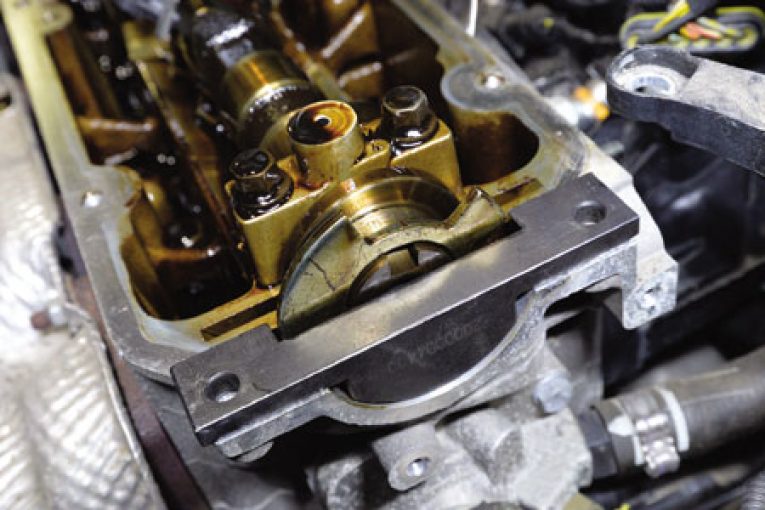
Step by step installation guide for a timing belt change on a Fiat 500 1.2l engine code 169 A4.000 from Contitech.
ENGINE CODE: 169 A4.000 RECOMMENDED LABOUR TIME: 2.35 HOURS
Fitters need the following special tools for the procedure:
1. Engine support beam cross member OE (1870595000)
2. Support bearing for engine support beam OE (1870650000)
3. Engine support beam longitudinal member OE (1860851003)
4. Bracket(s) for engine support beam OE (1871001300)
5. Crankshaft locking tool OE (2000004500)
6. Camshaft setting tool OE (2000004400)
7. Tensioning tool OE (1860987000)
Significant errors are frequently committed when changing the timing belt on this model of vehicle. The manufacturer recommends checking the timing belt every 60,000 km or every two years and, where appropriate, changing the belt every 120,000 km or after five years. In the case of vehicles driven under harsh operating conditions, belt replacement should take place after 120,000 km or four years.
It is recommended that you replace the tensioning pulley, idlers and water pump at the same time as changing the timing belt.
Preparatory work
Identify the vehicle using the engine code and disconnect the vehicle battery. Do not turn the crankshaft and camshaft once the timing belt has been removed. Turn the engine in the normal direction of rotation (clockwise), making sure you ONLY turn the engine at the crankshaft pulley and not at other pulleys. Comply with all tightening torques. Jack up and prop the front of the vehicle. If the water pump also needs changing, drain the cooling water.
Remove the engine cover, engine compartment under-panel, front right wheel, front right fender shield, support strut(s) for cross member on body, air intake hose of the air filter housing and air filter housing itself, ancillary unit belt and the crankshaft pulley.
Fit the engine support beam using tools 1 to 4 and remove the valve cover. Supporting the engine using the jack, remove the engine mount and engine bracket. Remove the top and bottom timing belt guard and fit the retaining bracket (OE 1871001300) for attaching the engine support beam.
Camshaft belt removal
Insert the camshaft gauge (OE 2000004400) into the camshaft.
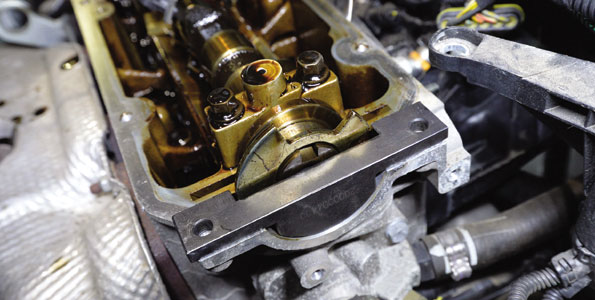
To do so, turn the crankshaft in the direction of engine travel using a suitable tool, until the markings on the camshaft (notch) point upwards to the 12 o’clock position.

Secure the camshaft gauge with two screws. Fit the locking tool (OE 2000004500) for the crankshaft to crankshaft pulley.
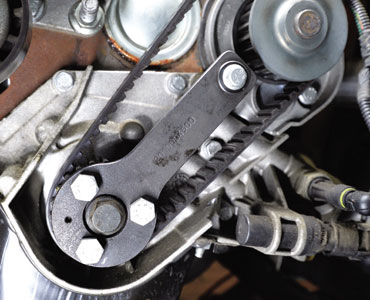
Loosen the tensioning pulley nut and release the tension on the tensioning pulley. Remove the timing belt.
Camshaft belt installation
Change the tensioning pulley and, if necessary, the water pump. Thoroughly clean and degrease the contact face between the water pump and engine.
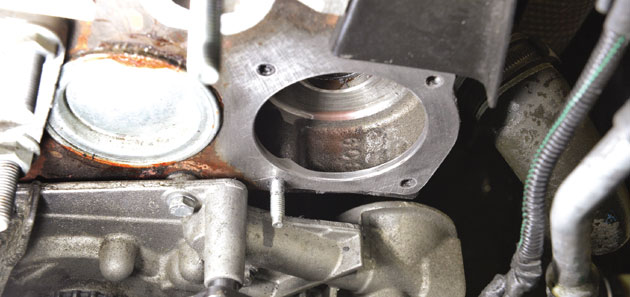
Carefully apply a sealing compound paste to seal the surface of the water pump.
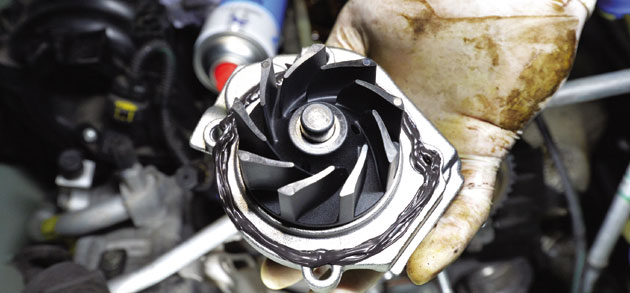
Make sure you use only the specified amount as excess sealing compound paste often results in leaking mechanical shaft seals. If a sealing compound paste is used when fitting the water pump, wait approximately one hour with the coolant circuit completely drained.
Fit the timing belt on the crankshaft pulley, starting anti-clockwise. The timing belt is then placed around the tensioning pulley as a final step. Take care to ensure that the timing belt is not kinked during fitting and make sure the belt is tight between the pulleys on the tight side.
Turn the tensioning pulley anti-clockwise towards the stop, using the tensioning tool (OE 1860987000), until the tensioning pulley is at maximum adjustment. Then tighten the tensioning pulley nut. The timing belt should now be tensioned to its maximum.
Timing belt tension
Remove the locking tools from the crankshaft and camshaft and turn the crankshaft through two revolutions in the direction of engine travel. The purpose of over-tensioning the timing belt is to better set the teeth in the pulleys. This is done to avoid subsequent setting of the timing belt during normal operation, resulting in reduced timing belt tension.
Check the engine setting before fitting the locking tools for the crankshaft and camshaft as before. Set the tension of the tensioning pulley to the correct mark. To do so, loosen the tensioning pulley nut. Then turn the tensioning pulley anti-clockwise using the tensioning tool (OE 1860987000) until the pointer is aligned with the reference mark.
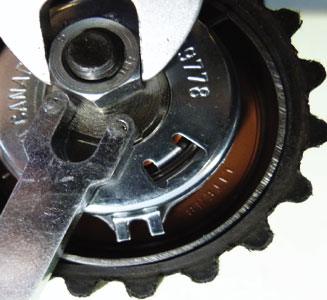
Tighten the tensioning pulley nut to a torque of 25 Nm. Since the markings can only be seen from below, use of a small mirror is recommended.
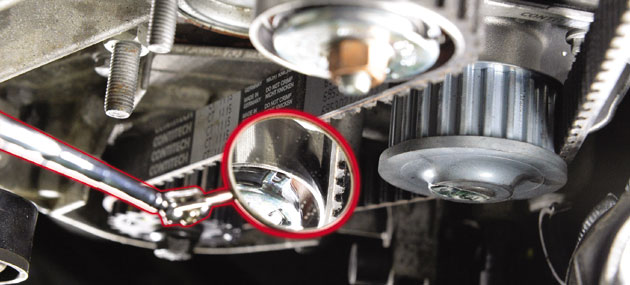
Remove the locking tools from the crankshaft and camshaft. Turn the crankshaft through two revolutions in the direction of engine travel and then check the engine setting. Fit the locking tools for the crankshaft and camshaft as before. If the locking tools can’t be inserted, correct the valve timings and then check the timing belt tension again. Check the tensioning pulley setting and reset, if necessary.
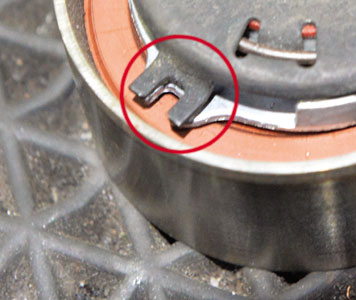
Remove the locking tools and gauge. Remove the holding tool and fit the components in reverse order of removal.
Fit the timing belt guard, crankshaft pulley (25 Nm), ancillary unit belt, engine mount bolts and engine mount, air intake hose of the air filter housing and the air filter housing itself, engine cover, engine compartment under-panel, front right wheel and fender shield.
Using the supplied sticker, record the changing of the original ContiTech timing belt and stick this in the engine compartment. Carry out a test run or test drive. Use the coolant to the manufacturer’s specification, before bleeding and checking for leaks.









